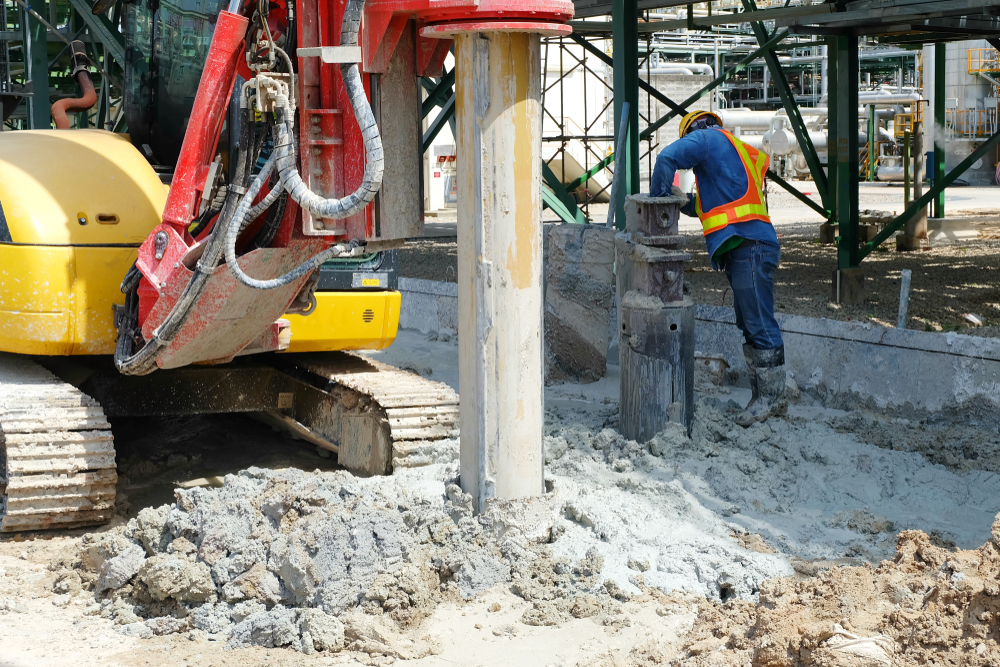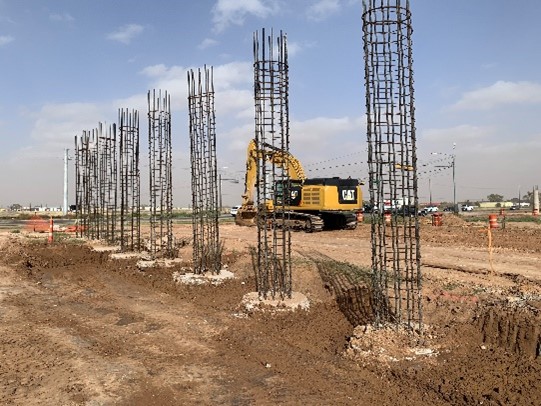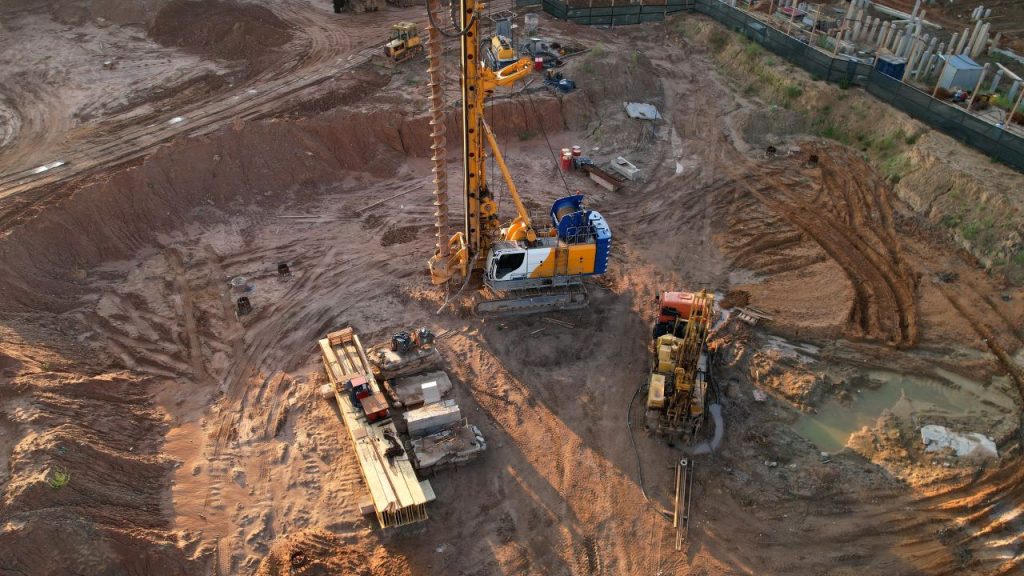Browsing the Complexities of Geotechnical Eng Projects
Browsing the Complexities of Geotechnical Eng Projects
Blog Article
A Thorough Summary of the Trick Duties of Geotechnical Engineers in Website Characterization and Ground Renovation Techniques for Design Solutions
Geotechnical designers are indispensable to the effective implementation of engineering projects, charged with the essential responsibilities of site characterization and the application of ground renovation strategies. Their job entails a detailed analysis of subsurface problems, employing numerous screening approaches to determine dirt and rock homes. This foundational understanding not just educates design decisions but likewise reduces possible threats connected with ground instability. As we discover the multifaceted functions of these experts, it comes to be obvious just how their experience shapes the safety and security and efficiency of engineering remedies. What certain strategies and evaluations attract attention in this vital discipline?
Role of Geotechnical Designers
Geotechnical engineers play a pivotal role in the design and building of framework by analyzing the behavior of soil and rock below the surface - geotech engineer. Their duties incorporate evaluating subsurface problems to inform layout choices that make sure architectural security and safety. By conducting in-depth analyses of soil homes, including shear toughness, permeability, and compressibility, geotechnical designers offer critical information that affects the option of appropriate building and construction products and strategies
In addition to assessing dirt technicians, geotechnical designers are charged with determining prospective hazards such as landslides, sinkholes, and ground settlements. Their know-how assists reduce threats connected with these geotechnical sensations, therefore shielding both the environment and public security. They additionally collaborate carefully with other engineering techniques, guaranteeing that geotechnical considerations are incorporated into general job design.
Furthermore, geotechnical designers participate in the evaluation of existing frameworks, offering suggestions for retrofitting and repairs when needed. Their detailed understanding of soil-structure interaction is vital for the advancement of lasting facilities solutions. On the whole, the function of geotechnical designers is essential to the effective understanding of building jobs, ensuring they are safe, long lasting, and compliant with regulatory criteria.

Website Characterization Processes
Efficient site characterization procedures are crucial for comprehending the subsurface problems that influence job layout and implementation. Geotechnical designers utilize a systematic approach to collect, assess, and interpret data relating to rock, groundwater, and soil features. This process starts with a detailed review of existing literature and historical website data, giving understandings right into previous website conditions and potential obstacles.

Information analysis complies with fieldwork, where designers make use of geostatistical techniques to analyze findings and develop geological designs. Via persistent website characterization, geotechnical engineers lay the groundwork for successful task execution, enhancing and minimizing unanticipated issues resource appropriation.
Dirt and Rock Testing Techniques
While recognizing subsurface conditions is important, the option of proper soil and rock screening approaches is similarly essential for accurate evaluation and style. Geotechnical engineers utilize a selection of testing methods to assess the physical and mechanical properties of dirt and rock products.
Research laboratory tests, such as Atterberg restrictions, grain size analysis, and unconfined compressive toughness tests, give essential data on soil habits under various moisture problems and packing scenarios. These look at more info examinations help figure out soil category and anticipate settlement or shear strength characteristics crucial for foundation style.
In-situ testing techniques, consisting of Standard Infiltration Tests (SPT), Cone Infiltration Examinations (CPT), and stress meter tests, allow engineers to gather information straight from the ground. These techniques provide valuable insights into the soil's thickness, consistency, and stratification without the requirement for considerable sampling.
Rock screening usually involves core sampling and research laboratory analysis to assess residential or commercial properties like uniaxial compressive stamina and rock top quality classification (RQD) With each other, these soil and rock screening methods make it possible for geotechnical engineers to make informed choices relating to site-specific challenges, making certain the safety and stability of important source engineering solutions.
Ground Enhancement Methods
Ground enhancement methods are vital for improving the design residential properties of dirt, thereby raising its load-bearing capability and decreasing negotiation. These methods are important in attending to challenges presented by troublesome or weak dirts, which can dramatically impact the stability and longevity of structures.
Different ground renovation techniques are employed, including compaction, grouting, and dirt stablizing. Compaction entails raising the thickness of soil through mechanical methods, which enhances its shear strength and reduces compressibility. Grouting, on the various other hand, includes injecting a liquid product right into the ground to fill up spaces and enhance dirt communication. This strategy is especially efficient for dealing with loose sands or fractured rock.
Dirt stabilization encompasses a series of methods, from chemical additives to mechanical treatments, focused on improving the dirt's resistance to erosion and deformation. Techniques such as lime stabilization or cement blending modify the residential properties of the dirt at a particle level, boosting its total performance.
Relevance of Geotechnical Evaluations
Geotechnical analyses play a vital function in the preparation and layout of design jobs, as they offer necessary info about the subsurface conditions. Comprehending dirt residential or commercial properties, rock formations, groundwater levels, and potential geohazards is essential for guaranteeing the stability and security of structures. These assessments make it possible for engineers to make educated choices regarding site option, style criteria, and building and construction methods.
The importance of geotechnical analyses expands beyond preliminary project stages; they contribute in risk management view publisher site and expense performance. By recognizing potential issues early, such as soil negotiation, incline instability, or excessive groundwater, engineers can create appropriate mitigation methods, decreasing the possibility of structural failings and costly delays. These assessments sustain compliance with regulatory requirements and boost the sustainability of design techniques.

Verdict
To conclude, geotechnical designers are essential to guaranteeing the security and stability of engineering projects with detailed site characterization and ground enhancement techniques. geotechnical eng. Their systematic approach to assessing subsurface conditions, combined with their recommendations for reliable ground alteration, dramatically improves dirt residential or commercial properties and load-bearing ability. The know-how of geotechnical engineers not just facilitates educated project preparation yet likewise makes certain compliance with guidelines and cultivates efficient communication amongst stakeholders, ultimately adding to effective design results
Geotechnical designers play an essential function in the layout and construction of infrastructure by evaluating the habits of soil and rock underneath the surface area. By conducting detailed analyses of soil buildings, including shear leaks in the structure, stamina, and compressibility, geotechnical engineers provide critical data that influences the choice of proper building and construction materials and strategies.
In addition to assessing soil mechanics, geotechnical designers are charged with recognizing potential threats such as landslides, sinkholes, and ground negotiations. Geotechnical designers use an organized approach to collect, examine, and translate data concerning dirt, groundwater, and rock qualities. By recognizing prospective issues early, such as dirt settlement, slope instability, or excessive groundwater, engineers can devise proper reduction approaches, lowering the likelihood of expensive hold-ups and structural failures.
Report this page